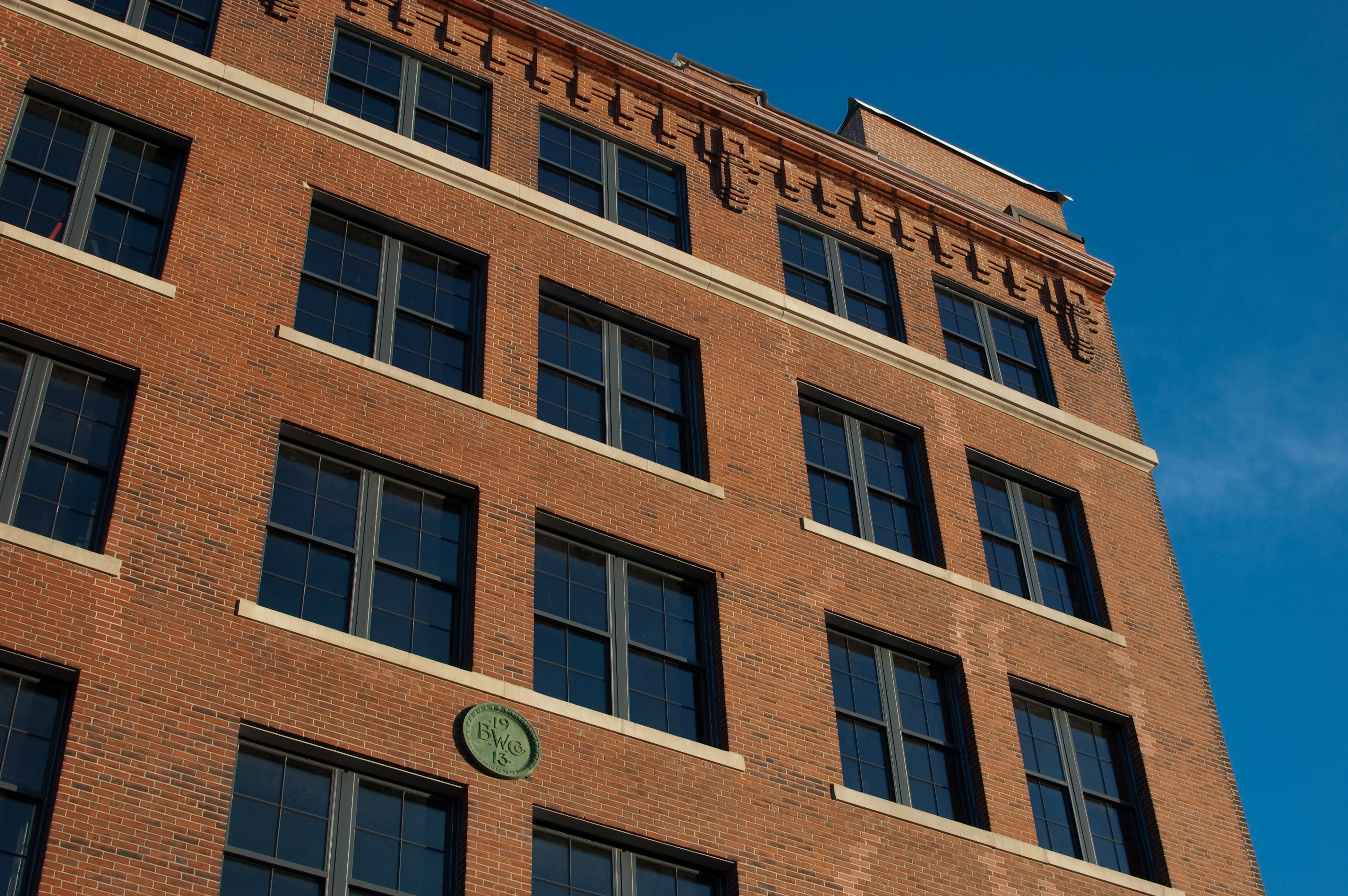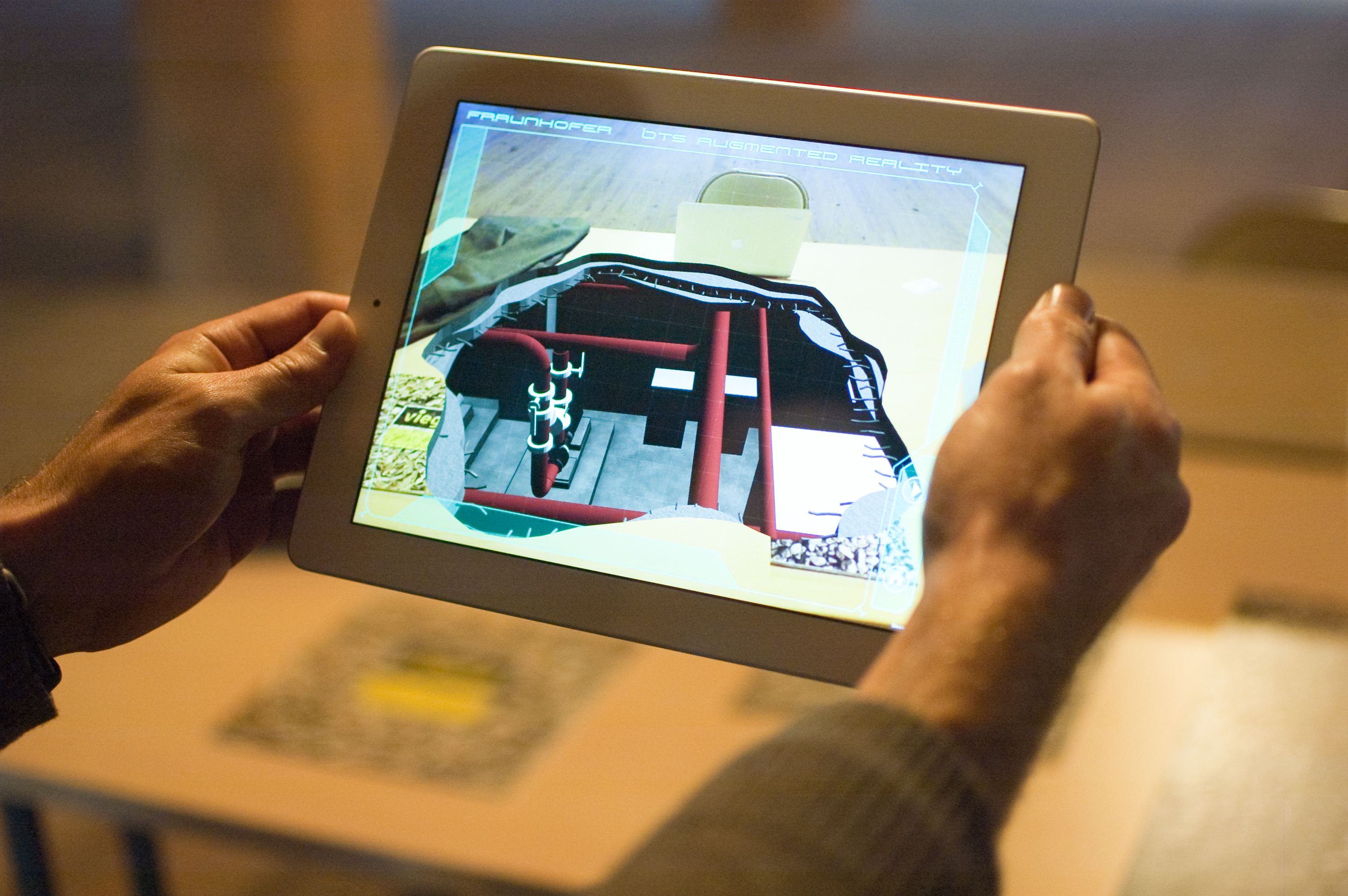Putting Building Science into Practice
A 100-year-old building will soon become a proving ground for cutting-edge building technologies.

The Fraunhofer Institute in South Boston is in the final stages of rehab project that will be able to test the performance of emerging building technologies, such as power-producing windows and new insulation materials. The 13-story brick former warehouse, which will house Fraunhofer’s solar and building science researchers, aims to consume about half the energy of a comparable structure.
Buildings account for some 40 percent of greenhouse gas emissions in the U.S. and more in cities like New York where it’s closer to 80 percent. Commercial buildings, in particular, often waste a lot of energy by heating and lighting unoccupied buildings, making them a ripe area for improvement.
The problem for architects isn’t a lack of products—green building conferences are packed with everything from recycled building materials to solar awnings. The challenge is choosing the products that offer the best return on investment and fitting them into an overall design.
Fraunhofer’s Building Technology Showcase, which is expected to be opened in March, is using only off-the-shelf products, most of which are donated by about 40 manufacturers. The $23 million retrofit of the 50,000 square-foot historic structure is being partially funded by state and city economic development grants as part of an effort to develop the Innovation District in Boston.
Here are some of the unique features I saw during a tour of the site still under construction:
Augmented Reality: The first floor entrance of the Building Technology Showcase will have an exhibit open to the public, an effort to generate interest in building science. Visitors will be able to use a novel visualization tool for learning about the building’s mechanical systems.
Fraunhofer engineers wrote an iPad application that lets people point the tablet at a wall or floor and see an animation of the pipes and ducts underneath. The display, which could be used by professional as well, will also show data, such as ambient temperature, pressure, and flow rates.

Test Bed for Building Materials: Fraunhofer building scientists will use the building itself to test the performance of on-site solar technologies and the effectiveness of new types of lighting and HVAC systems.
The south-facing wall will have different “smart glass” technologies, including windows that tint automatically to keep heat out while maximizing daylight and electricity-producing windows. Researchers will be able to also measure the performance of windows or heating systems in special “climate chambers,” stand-alone structures where components can be swapped out for tests.
Even the insulation in this building is instrumented. The Showcase building will try many types of insulation on the walls, including vacuum panels that use gas, rather than cellulose or fiberglass, as the actual insulator. Sensors placed on each wall will collect temperature and humidity data to measure the comparative performance.
The building will be partially powered by an array of solar panels on a parking garage next door (since it’s a historic building, they couldn’t be placed on the façade). The researchers hope to use that on-site generation to test out microgrid technologies, according to Dirk Mahling, the director of the distributed electric energy systems group at Fraunhofer Boston. During a power outage, the building could potentially operate partially, or create a microgrid with neighbor Gillette to “operate on one leg” when the grid is out.
Deep Energy Retrofit. One of the challenges in green building design is making dramatic energy reductions to existing buildings which, after all, represent the majority of the building stock. The Building Technology Showcase is putting insulation on the interior of the brick walls and ceiling, which requires designers to carefully monitor moisture. The vacuum insulation panels, which are gas-filled enclosures covered by structural foam, promise as much as R40 insulation per inch, according to project manager Alex Cheimets.

The building will use efficient lighting and HVAC systems, including chilled beams. Cool water is piped through overhead structures to cool the air around it, which drops down into the rooms. In general, by having a heavily insulated and tight construction, designers can save money with smaller heating and cooling equipment. And certain practices, such as precooling conference rooms before meetings, will be another way to improve the overall building efficiency, Cheimets says.
Keep Reading
Most Popular
Large language models can do jaw-dropping things. But nobody knows exactly why.
And that's a problem. Figuring it out is one of the biggest scientific puzzles of our time and a crucial step towards controlling more powerful future models.
The problem with plug-in hybrids? Their drivers.
Plug-in hybrids are often sold as a transition to EVs, but new data from Europe shows we’re still underestimating the emissions they produce.
Google DeepMind’s new generative model makes Super Mario–like games from scratch
Genie learns how to control games by watching hours and hours of video. It could help train next-gen robots too.
How scientists traced a mysterious covid case back to six toilets
When wastewater surveillance turns into a hunt for a single infected individual, the ethics get tricky.
Stay connected
Get the latest updates from
MIT Technology Review
Discover special offers, top stories, upcoming events, and more.